

2018 Innovation Stream Brochure. 9 Elephants in the (Class)Room That Should “Unsettle” Us. 19 1Share.
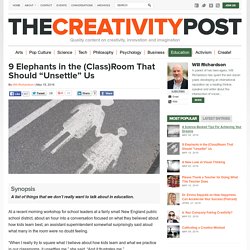
Blog. Almost six years ago, I wrote a piece for Huffington Post titled "My Kids Are Illiterate.
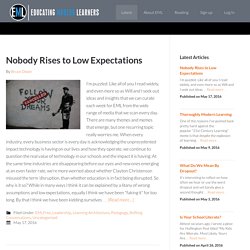
Most Likely, Yours Are Too. " (Nothing too provocative there, right?) My point was not that my kids couldn't read or write or do basic math. School had done a decent job of making that happen. Teach Above the Test2.pdf. Sweet Porridge. I Flip, You Flip, We All Flip. The Flipped Classroom. Innovative Educators Aotearoa – Communauté – Google+ Modern Learning Environments – the underlying philosophy to success.
Modern Learning Environments (MLE) are all the talk in educational circles right now.
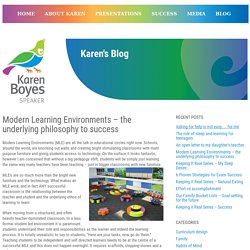
Schools, around the world, are knocking out walls and creating bright stimulating classrooms with multi purpose furniture and giving students access to technology. On the surface it looks fantastic, however I am concerned that without a big pedagogy shift, students will be simply just learning the same way many teachers have been teaching – just in bigger classrooms with new furniture.
MLE’s are so much more than the bright new furniture and the technology. What makes an MLE work, and in fact ANY successful classroom is the relationship between the teacher and student and the underlying ethos of learning to learn. When moving from a structured, and often heavily teacher-dominated classroom, to a less formal student led environment it is paramount students understand their role and responsibilities as the learner and indeed the learning process.
Finland schools: Subjects are out and ‘topics’ are in as country reforms its education system - Europe. For years, Finland has been the by-word for a successful education system, perched at the top of international league tables for literacy and numeracy.
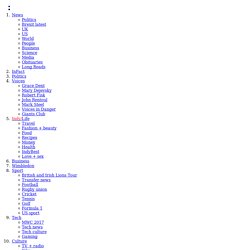
Only far eastern countries such as Singapore and China outperform the Nordic nation in the influential Programme for International Student Assessment (PISA) rankings. Dyslexia. Dyslexia is defined in the Webster’s Concise Dictionary as “an impairment or loss of the ability to read”.
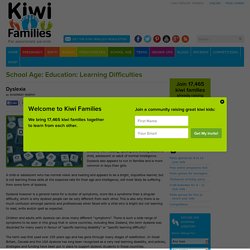
It comes from the Greek “dys” meaning bad, difficult or defective and , “lexis” meaning speech, or lexicos pertaining to words. Most simply put dyslexia is a significant, persistent difficulty with reading, spelling and writing skills in a child, adolescent or adult of normal intelligence. LD OnLine: The world's leading website on learning disabilities and ADHD. QuestionTemplates.pdf. Resources and Downloads for SEL Classroom Management. Links to useful matrices and tools.
Future Orientated & 21st Century learning and school examples. Assessment For Learning. Elementary Teach Differentiated Instruction. Bloom's 'Digital' Taxonomy - Printable Reference Table. Rich Media - Part 3: Rich Media in Practice. SOLO taxonomy explained using Lego. KB...Konnected. TED Radio Hour. The Five Habits of Creative Teachers - Education Week Teacher. Published Online: August 19, 2014 By Cathleen Nardi, Melissa Goodwin, Tracee Vetting Wolf, Strawberry-Blue Olive, and Maureen Maher Wizel Ken Robinson’s renowned TED talk, “How Schools Kill Creativity,” has had 27 million views.
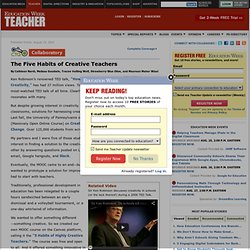
Five Habits of Highly Creative Teachers. Life beyond the dairy. What is dyslexia? - Kelli Sandman-Hurley. Nigel Latta, Series 1, Episode 2. The Periodic Table Of How Kids Play. The Science Behind Graduating A Class With Majority Women Engineers. Celebrating confusion. How can we encourage our students (and ourselves) to embrace confusion?
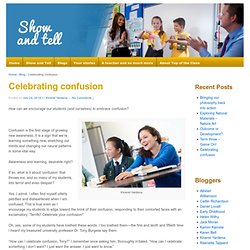
Kineret Yardena Confusion is the first stage of growing new awareness. Play as pedagogy - Early Learning. " Education is what the child does in order to discover........it is not about pouring information into an empty vessel.
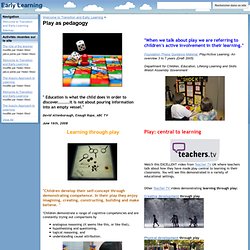
" David Attenborough, Enough Rope, ABC TV June 16th, 2008 Learning through play. How the Maker Movement Is Moving into Classrooms. The Maker movement is a unique combination of artistry, circuitry, and old-fashioned craftsmanship.
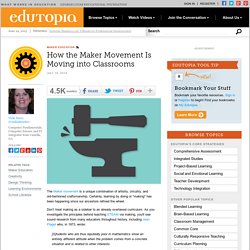
Certainly, learning by doing or "making" has been happening since our ancestors refined the wheel. Don’t treat making as a sidebar to an already overtaxed curriculum. 4 Characteristics Of Learning Leaders. 4 Characteristics Of A Learning Leader by Stewart Hase, Heutagogy of Community Practice Writing is always a learning experience for me.
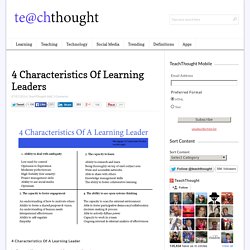
It forces greater clarity. In addition, the tranquility of the unique Australian bush setting in which I am currently sitting, miles from anywhere, provides a perfect environment for learning. Isaac Asimov on the Thrill of Lifelong Learning, Science vs. Religion, and the Role of Science Fiction in Advancing Society. By Maria Popova “It’s insulting to imply that only a system of rewards and punishments can keep you a decent human being.” Isaac Asimov was an extraordinary mind and spirit — the author of more than 400 science and science fiction books and a tireless advocate of space exploration, he also took great joy in the humanities (and once annotated Lord Byron’s epic poem “Don Juan”), championed humanism over religion, and celebrated the human spirit itself (he even wrote young Carl Sagan fan mail).
Like many of the best science fiction writers, he was as exceptional at predicting the future as he was at illuminating some of the most timeless predicaments of the human condition. Mantle of the Expert.com. Guide Notes: This section has been designed to organise the growing number of Mantle of the Expert frames into a consistent format which can be easily explored. The planning it contains has been invented and used in class by practicing teachers and categorised according to the key stages in the National Curriculum. Copy of Campfires, Caves and Waterholes by Charlotte McCullough on Prezi. Oct04_invited. Editor’s Note: The second invited paper for 2004 comes from David Thornburg, a futurist and philosopher whose insights have guided corporations and governments for over a quarter of a century. Dr. Thornburg draws attention to the importance of storytelling to communicate concepts and culture, not only to our contemporaries, but to the next generation, His use of analogy and metaphors to clarify the role of various communication processes and environments brings us to realize that, like Dorothy in the Wizard of Oz, the answers we seek were always visible, but not necessarily understood – at least not until explained to us!
Effective pedagogy / The New Zealand Curriculum. Teacher actions promoting student learning While there is no formula that will guarantee learning for every student in every context, there is extensive, well-documented evidence about the kinds of teaching approaches that consistently have a positive impact on student learning. This evidence tells us that students learn best when teachers: create a supportive learning environment encourage reflective thought and action enhance the relevance of new learning facilitate shared learning make connections to prior learning and experience provide sufficient opportunities to learn inquire into the teaching–learning relationship.
Creating a supportive learning environment. Teacher Appreciation Week: Ideas. Are you searching for new ways to show your teachers how much you appreciate their efforts? EDtalks. What's the best way to assess the impact of fli. Check out the article Report: Interest in Flipped Classrooms Surpasses Other Digital Learning Trends -- THE Journal. Search results. How a Radical New Teaching Method Could Unleash a Generation of Geniuses. In 2009, scientists from the University of Louisville and MIT's Department of Brain and Cognitive Sciences conducted a study of 48 children between the ages of 3 and 6.
The Classroom Experiment (Ep.1) Where Learning Happens. What is PISA and what do the results say about New Zealand schools? What Students Remember Most About Teachers. Dear Young Teacher Down the Hall, A unique teacher imparts real life lessons. Quest is fun, be nosey: Tristan Pang at TEDxYouth@Auckland. Think, Pair, Share.
What is Think, Pair, Share? Think-Pair-Share is a strategy designed to provide students with "food for thought" on a given topics enabling them to formulate individual ideas and share these ideas with another student. It is a learning strategy developed by Lyman and associates to encourage student classroom participation. Rather than using a basic recitation method in which a teacher poses a question and one student offers a response, Think-Pair-Share encourages a high degree of pupil response and can help keep students on task. Teaching and Learning Research Initiative (TLRI) Social Change Is The Same In Every Language. Khan Academy. Salman Khan: Let's use video to reinvent education. Brain Games & Brain Training - Lumosity.
Why Call on Just One When We Can Call on Everyone? Dr.